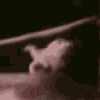Sign In
Closeprofiles in monstrosity 4 by kogith
adults are 12-15" long, 1-1½" wide, shaped like a slightly-flattened tube smoothly tapered at both ends. their color varies from a light greenish-gold in bright sun, to dark green approaching black in prolonged deep shade. they possess four rows of eyespots, usually in two pairs on opposite sides of the body, but occasionally all four rows are clustered together or more equidistant. Small pores can be seen all over the body. juveniles are basically just smaller, with fewer eyespots and more abrupt tapers at first.
they have two main forms of locomotion. In the first, the direction of travel is perpendicular to the axis of the body -- it curls one side of its body toward the direction of travel while rolling over a quarter-turn or so, then curls the other side & rolls while the first side straightens out. When startled, it can for short bursts perform this motion so quickly that the center of its body stays off the ground. The other main form of locomotion is corkscrew-like, parallel to the axis of the body, rotating continuously while the body rhythmically lengthens and shortens. This is more often seen in colonies (see below) rather than in individuals moving across the ground.
their behavior in colonies, together with their color responses to sunlight, suggests they are photosynthetic. Aggregates of many thousands of individuals have been found climbing up streetlamps, fire escapes, and certain buildings with especially rough-textured facades, slowly wrapping around one another in an arrangement quite like fibers in a rope. It seems that once the "strand" is several layers thick, the inner ones die from lack of sunlight and harden in place. This core allows the colony to grow to 100 feet tall or more. The colony expands from the top, though the exact process of reproduction has not been documented.
they cling tightly to one another without any external secretions, more like a magnetic or electrostatic force. However, indviduals do regularly fall off the colony, and they can survive a 60-70-foot drop onto asphalt. In areas more exposed to wind, the greater frequency of individuals falling off and climbing back up can lead to the base of the colony flaring out as much as 40-50 feet. Sometimes, and increasingly often with colonies approaching maximum size, fallen ones will wander away from the colony rather than climbing back up it. they may become drawn to another nearby colony, but usually they seem to seek out a suitable place to start a new colony. they are somehow able to signal when they have found one without having to return, such that more and more fallers from the former colony begin following their trail. There seems to be a population threshold before the new colony can begin climbing, but its number is not yet known.
they are vulnerable to a flying parasite, especially younger colonies or ones that have been damaged by storms. The parasite burrows into the base of the colony, sheds its wings, and feeds on the core of dead individuals, gradually climbing upward. Eventually the entire colony will collapse. The parasite then lays eggs, apparently in proportion to how long it was able to feed, and dies. The host colony typically will have begun to rebuild by the time the eggs hatch, but will not have matured enough to possess much of a core, so the parasite nymphs have to seek new hosts.
wormy
Submission Information
- Views:
- 523
- Comments:
- 0
- Favorites:
- 0
- Rating:
- General
- Category:
- Literary / Other


